In 2019, after Slow Cheese in Bra, I spent a few nights at Cascina Finocchio Verde in Piedmont Italy, where Christian Lauer is one of the few remaining producers of true Langhe sheep Tuma. The Alta Langhe region is home to this beautiful little cheese that in the past was made solely with the milk from the local Langhe sheep. They are a course wooled breed which has been steadily replaced by so-called improved breeds. They possess the hardiness and browsing ability notable in many heritage breeds, I observed them eating acorns and woody brush. There is a PDO cheese made here called Murrazano, but it allows the addition of cows milk.
Christian is Austrian and learned to make this cheese from an Italian man named Mario who ran this place as a bnb and hosted volunteers. Mario passed away and now Christian runs the sheep dairy in a small abandoned villa set on a ridge above hillside vineyards. The cheese is deceptively simple in appearance, it has only the beginnings of a rind and is generally eaten at 1-2 weeks old. The aging room is high humidity (95%) and fairly warm, more what we call a hastening room (a space cheeses go to for the first 3-5 days of aging to allow yeast to come in). It has a light dusting of white geo but is mainly yeasty, It is fairly firm and has a pleasant barnyard aroma. Lactic sour and sheepy sweet blend perfectly.
Like many on my list of favorites, it is made in small batches, sold hyperlocally, and will likely never win any awards. It is worth seeking, anyone can and should book a few night at Finocchio Verde, pick up a bottle of Barolo, and experience this cheese in place, for the hands of the maker. The cheese is the place, it wouldn’t be the same out of its context. For me the full experience of this and other cheeses requires putting my feet on the ground, seeing the animals, smelling their barn and hay, listening to the wind blow through the trees, hearing the calls of a shepherd refusing to conform to a world gone mad.
We went for a walk in the pastures and brought the peaceful sheep up for milking. While in the small aging space connected to the make room, I smelled the ripening cheese and was hit with a CATHARTIC CHEESE EPIPHANY: the cheese smelled like the pasture we had just walked through. It smelled like grass, leaves, and sheep shit, but in the best possible way. In a poetic, terroir defining, preindustrial way that struck a primal bass note deep in my psyche. This cheese is absolutely one of a kind, a distillation of a landscape, and represents why I have become so passionate about raw milk, and natural cheesemaking. I will never forget that sensory experience, it’s forever deposited in my flavor memory bank, where it gains interest year by year, and makes more sense now as I look back upon it with greater knowledge and insight.
While hand milking the small flock, Christian didn’t wash the animals teats, or discard the initial squirt of milk. This broke the protocol I was taught in the US. He told me that initial squirt contained a stronger dose of the microbes he wanted. The milk went into a wooden bucket and then directly into a large pot where it was heated before having rennet added. Where was the starter? Some would say there was no culture added, but now I realize that the teats are the source of starter, and that the wood bucket served as a reservoir for segments of the raw milk ecology that ferment the milk. The curd was set very hard, and cut vertically fairly small, 1/2 to 1/4 inch pillars. The horizontal cut is done while ladling, similar to Brie but the curd is much firmer. It had barely developed any acidity at this point, so the moisture was removed by this small cut, cook, and stir. After hooping in a single cloth laid over molds, hot whey was poured on the cheese which was covered with a wood box to keep the heat in. It was flipped every hour for 4 hours and more hot whey poured on the cheese and draining table to keep the temp up, encouraging fermentation.
The cheese wasn’t salted until 3 days after it was made. That delay allowed the ph to drop slowly, enzymatic breakdown to begin, and yeast to establish pre salting. The cheese had such a unique flavor because of the reliance on indigenous raw milk microbes. I have had the sensation of a cheese smelling like the animals, fields, and housing only a few other times and noticed some similarities in the farming practices:
Small herds with plenty of space on healthy pasture. Livestock will avoid sleeping in their own manure if possible. The plants and bedding materials laid upon become a source of microbes on the teats. The animals keep their udders clean.
No or minimal teat washing and dipping. Muddy teats are rare. The healthy teat ecology from #1 is maintained.
Unrefrigerated milk used immediately or held in a cool room overnight. Intact fresh raw milk still carrying microbial diversity from #1 and #2.
No added starter, a natural whey or clabbers starter, or light dose of yogurt. The indigenous LABS (lactic acid bacteria) are shining through.
Wild yeasts establishing early, and sometimes detectable by smell on wooden equipment in creamery, or milking equipment. In my mind this means healthy biofilms of yeast are present, which quickly grow in milk, on cheeses, or any dairy products made in the space.
I’m not saying that doing these is the only way to make great cheeses. For most makers a lot of this is not feasible. I am interested in the diversity of approaches, and end results, not an idealized right way of doing things. It is intended as a list of clues, of possibilities. It is a philosophy, of allowing indigenous microflora into the cheesemaking process, of working to cultivate and steer the natural goodness of raw milk. Of trusting and working with wild microbes. Of considering the health of animals and landscapes as a crucial part of cheesemaking. Of considering the validity of time tested practices, and questioning the necessity or validity of modern sanitation paradigms.
I am saying this: if you want to make great raw milk cheese, consider what your animals are sleeping on. Consider the impact of your whole farming system on their health and happiness, with a focus on teat and udder health. Consider their teats, your hands, and your milking equipment to be sources of and factors in your raw milk’s ecology, and work to maintain the health of this ecology. Consider how you might maintain this ecology, keeping it intact into your make.
If you don’t make but enjoy eating cheese, try to seek out and be willing to pay a premium for rare cheeses like this, be willing to put in effort to find them. Farm stays are an amazing type of experience that offer a separate income for struggling small farmers. Food tourism can not only expand your knowledge and palate but aid the survival of endangered cheeses, and sound farming practices. Ask makers and mongers about raw milk and natural starter cheeses, so we can encourage this approach to become more mainstream. Thanks for reading, and feel free to add questions or comments below!





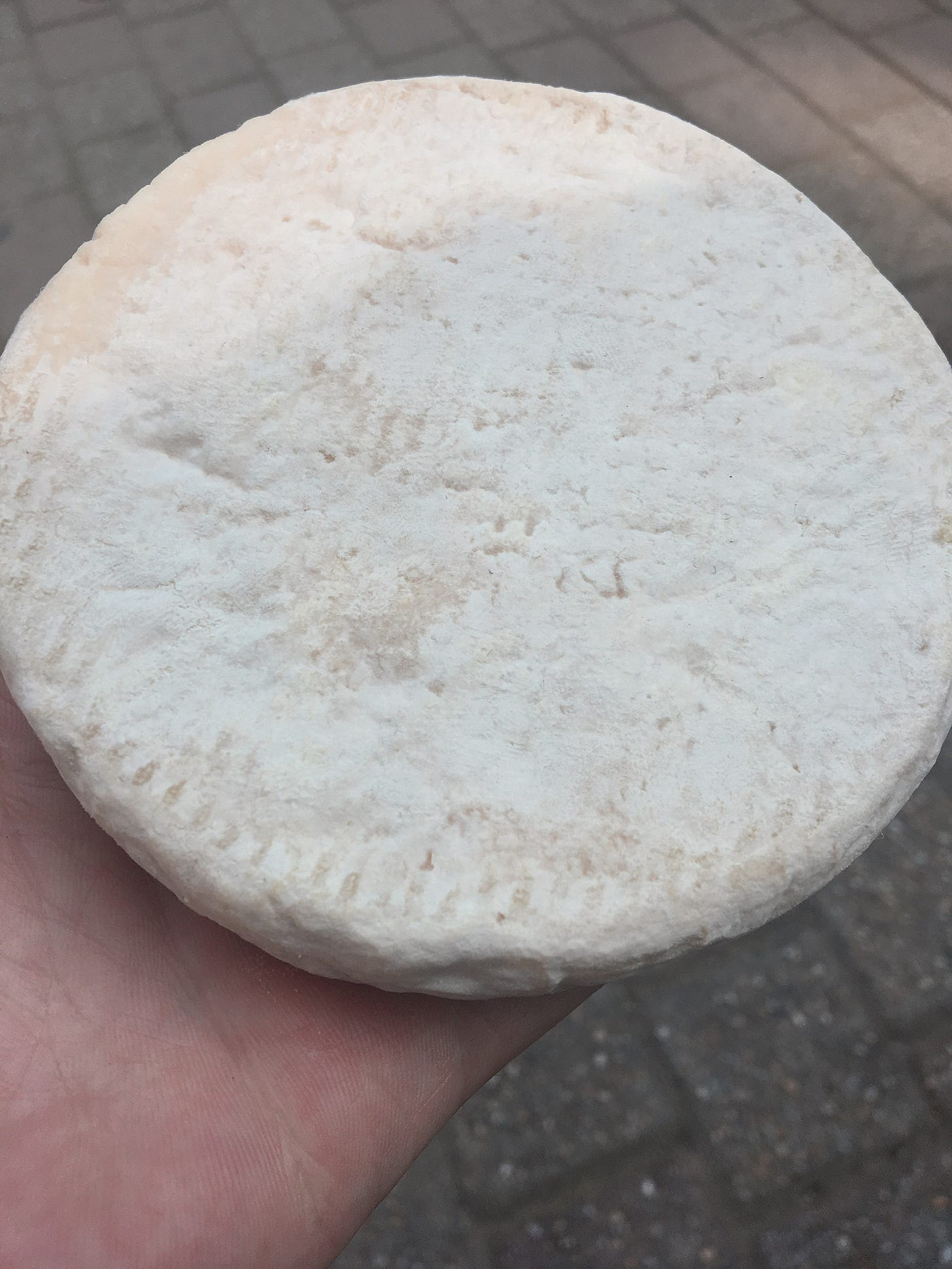
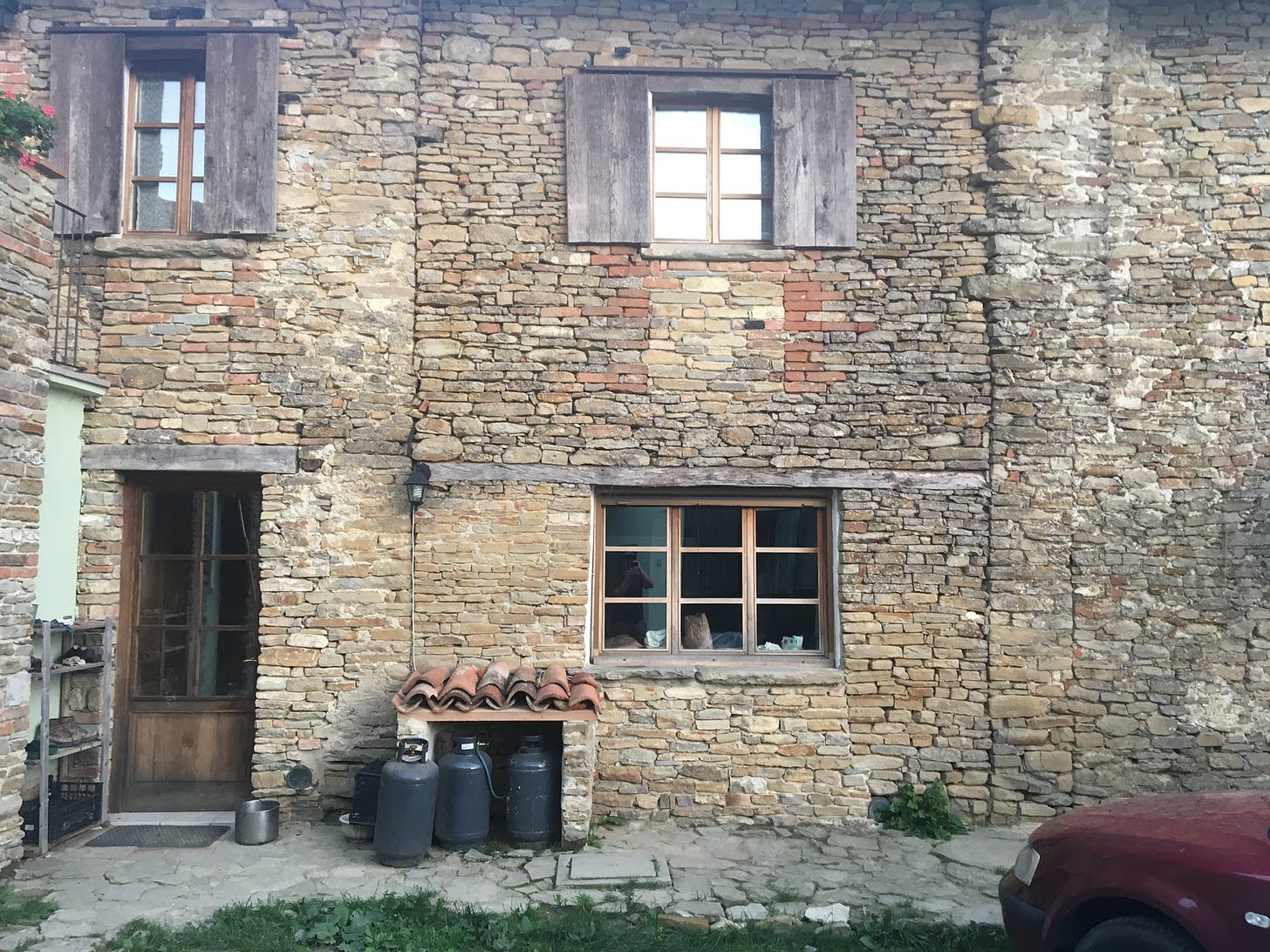
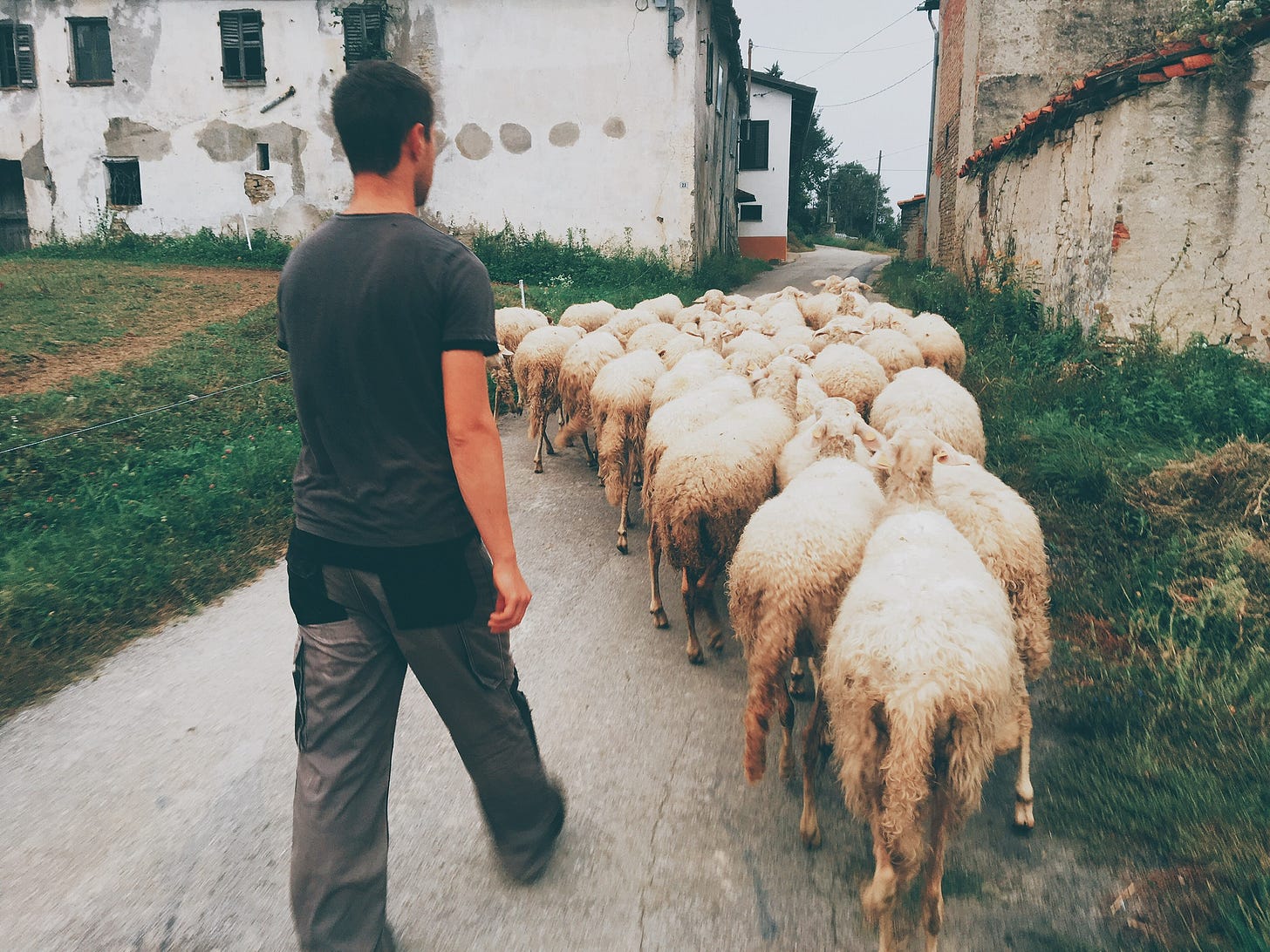

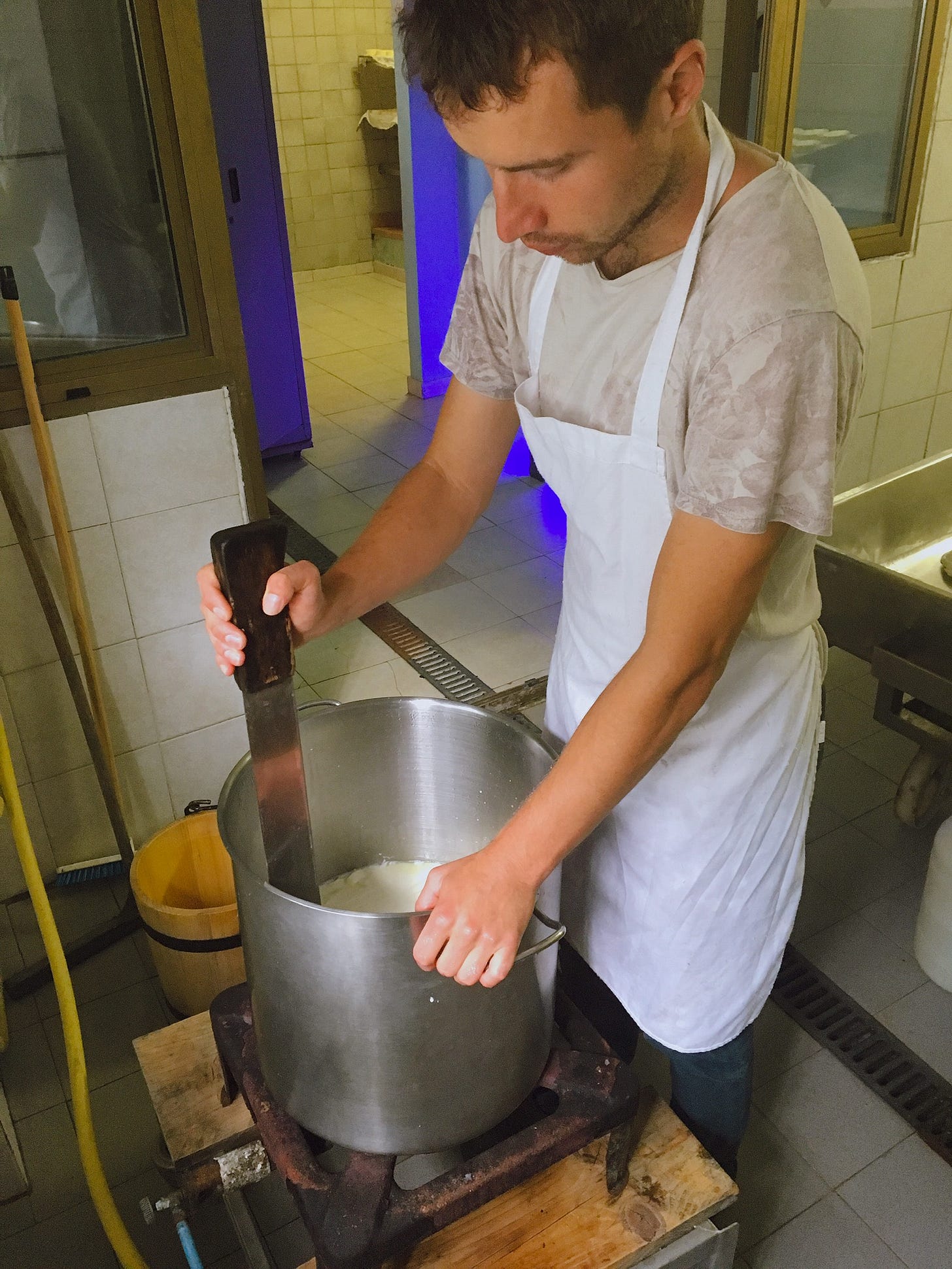
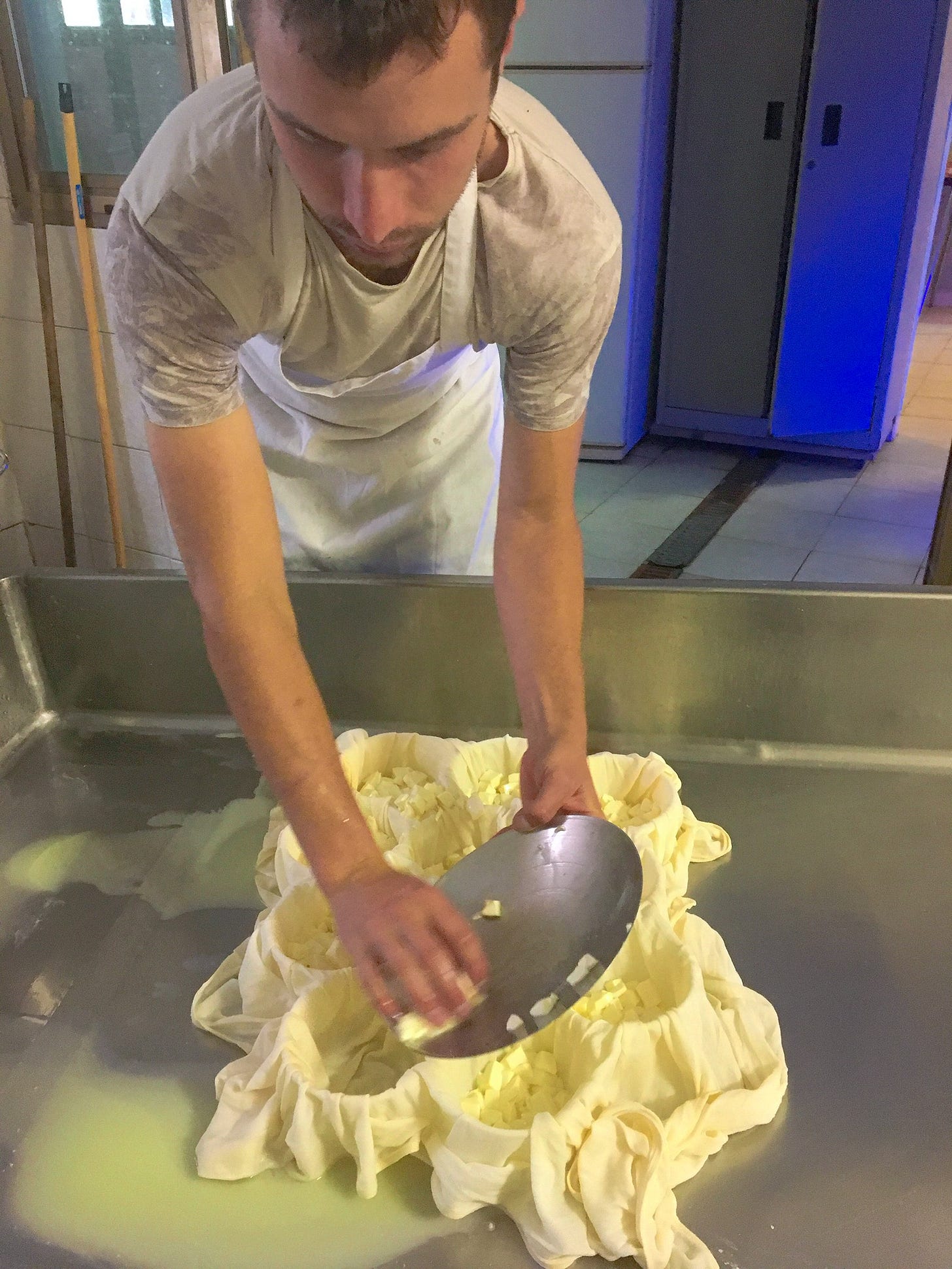
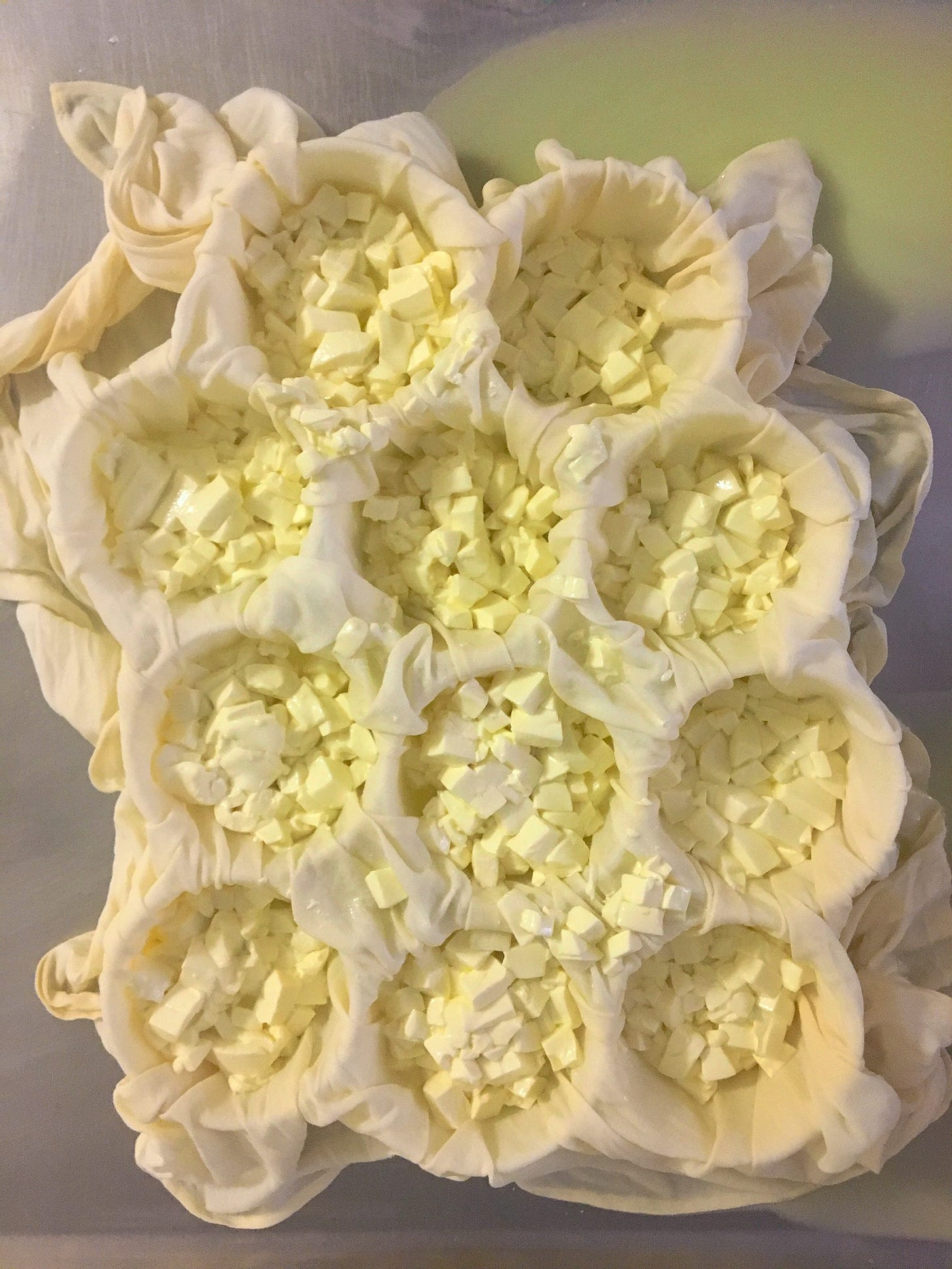
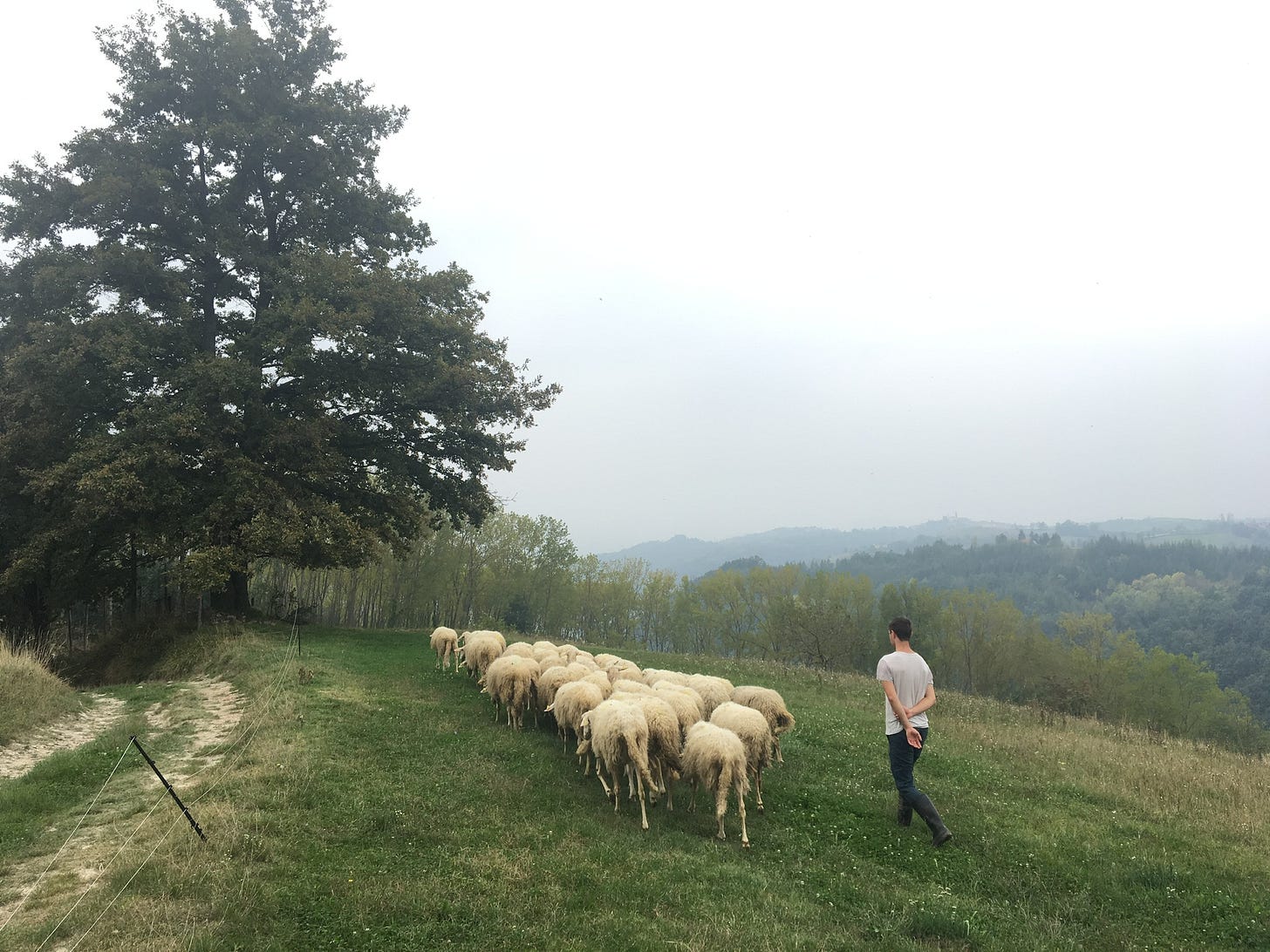
Hey, Trevor. I had been wanting to ask your opinion on the use of copper vessels for holding and/or processing milk. I remember a post many months ago showing a hammered copper cheese vat. If you haven't already elaborated on this topic...would you mind, here?
Thanks!
This is pretty fantastic! I've made cheeses that don't get salted for quite some time or are salted slowly over a period of days and the sour note is one that I definitely enjoy, but the pouring of whey over a cheese is something new to me and I love the lack of a traditional starter. Thank you!